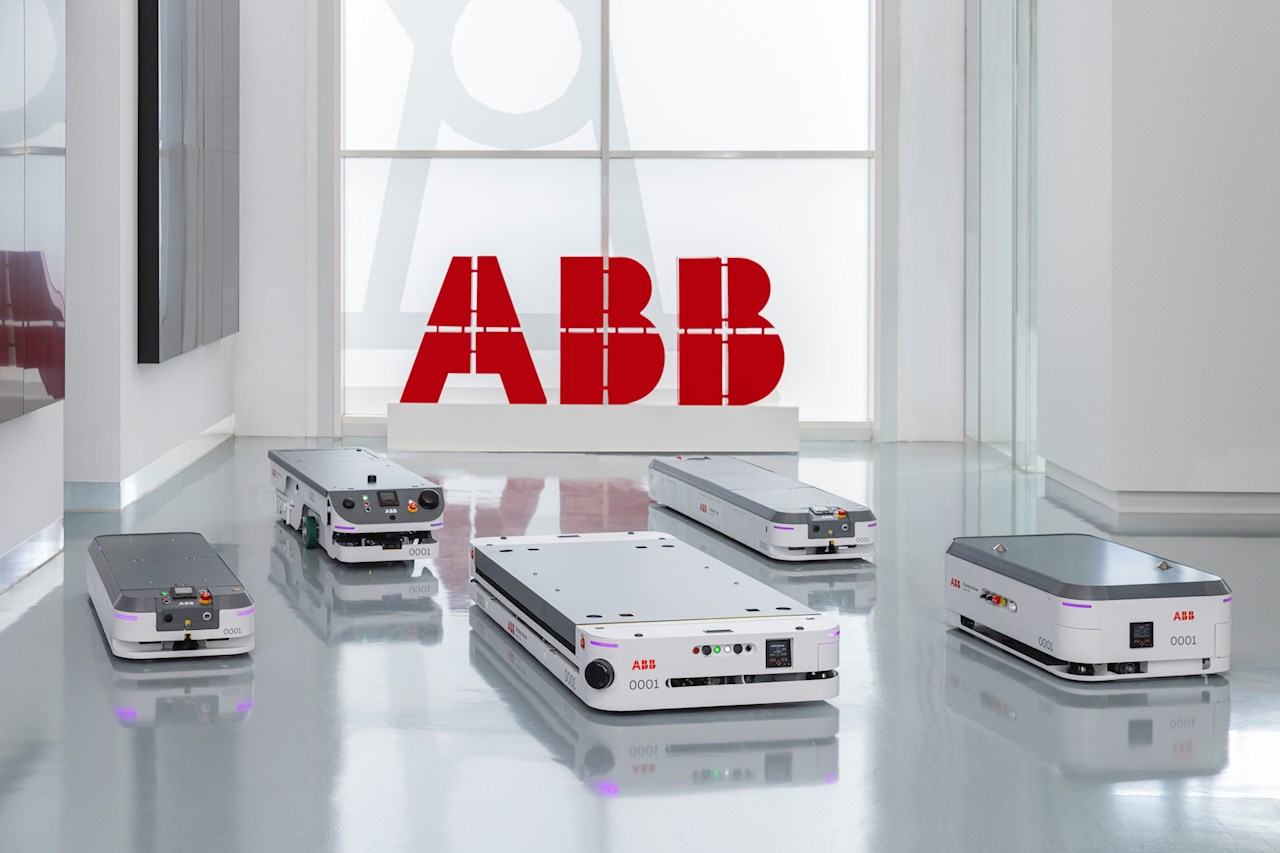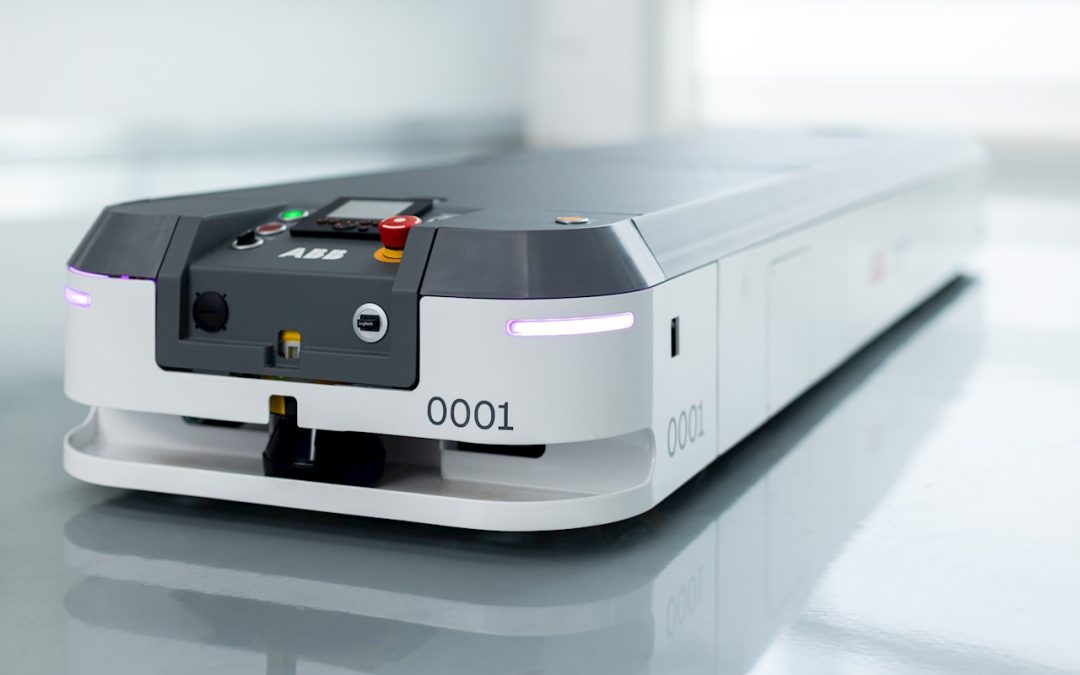What Are Autonomous Mobile Robots (AMRs)?
In the dynamic landscape of automation, Autonomous Mobile Robots (AMRs) are emerging as a transformative technological force. Functioning independently, these robots seamlessly traverse diverse environments, operating without the need for direct human control. The integration of a sophisticated suite of sensors and advanced algorithms empowers AMRs to not only perceive their surroundings but also make real-time decisions and autonomously execute a myriad of tasks.
With a remarkable combination of mobility, adaptability, and an innate capacity for obstacle avoidance, AMRs find themselves exceptionally well-suited for a broad spectrum of applications. From the intricacies of warehouse logistics to the complexities of manufacturing and the demands of healthcare, AMRs showcase their versatility. Crucially, these robotic marvels play a pivotal role in the realm of operational efficiency by undertaking tasks traditionally within the human domain, thereby contributing significantly to heightened productivity and enhanced adaptability within ever-evolving and dynamic work environments.
The Benefits of AMR Technology
AMR (Autonomous Mobile Robot) technology offers a multitude of benefits across various industries, revolutionising traditional workflows.
Some key advantages include:
- Efficiency Boost: Streamlines operations for faster and more efficient tasks.
- Flexibility: Adapts easily to dynamic environments and diverse tasks.
- Enhanced Safety: Equipped with advanced sensors for accident prevention.
- Cost Savings: Reduces labour costs, operates 24/7, minimising downtime.
- Accuracy and Consistency: Performs tasks with precision, minimising errors.
- Resource Optimization: Collaborates with existing systems for efficient resource use.
- Real-time Monitoring: Sensors offer real-time data for inventory and performance tracking.
- Integration Capability: Seamlessly integrates with existing automation and software.
- Scalability: Easily scales to accommodate business growth.
- Employee Empowerment: Frees up human workers for more strategic and fulfilling roles
The Different Types of AMRs
Autonomous Mobile Robots (AMRs) come in various types, each tailored to specific tasks and operational needs.
Goods-to-Person Robots:
Designed to bring items from storage locations directly to human operators for order picking, reducing walking time and increasing efficiency in fulfilment centres.
Specialised for transporting pallets within warehouses and distribution centres. These AMRs can load, move, and unload palletised goods autonomously.
Collaborative Robots (Cobots):
Designed to work alongside human employees, these robots assist with tasks like material handling, assembly, or inspection, promoting a collaborative and safe working environment.
Typically used for towing carts or trailers within facilities. They are effective for moving larger quantities of goods from one location to another.
Autonomous forklifts that can lift and move palletised goods. They optimise warehouse operations by automating traditional forklift tasks.
AGVs (Automated Guided Vehicles):
While technically not considered AMRs, AGVs are autonomous vehicles that follow predefined paths and are commonly used for material transportation within warehouses and manufacturing plants. AGVs are the predecessors to mobile robots and have been in operation since the 1950’s.

Through our partnership with ABB robotics we offer next-generation AMRs for warehouse automation and advanced industrial handling solutions.
Shuttle Systems:
AMRs designed to operate in high-density storage environments, such as automated storage and retrieval systems (AS/RS). They retrieve and transport goods between storage locations and workstations.
Cleaning and Inspection Robots:
AMRs equipped with sensors and tools for tasks like cleaning floors, inspecting equipment, or monitoring environmental conditions.
Security and Surveillance Robots:
Utilised for monitoring and patrolling large facilities, these robots enhance security by providing real-time video feeds and surveillance capabilities.
Customisable Task Robots:
AMRs designed with a modular approach, allowing businesses to customise them for specific tasks such as inventory scanning, data collection, or specialised material handling.
Last-Mile Delivery Robots:
Small, ground-based robots designed for delivering packages to customers’ doorsteps. They are often used in logistics and e-commerce to optimise the last leg of the delivery process.
Medical and Healthcare Robots:
AMRs designed for tasks in healthcare settings, such as delivering medications, transporting medical supplies, or handling hazardous materials.
Challenges and Considerations
While Autonomous Mobile Robot (AMR) systems offer numerous benefits, businesses must consider and address several challenges during the planning, implementation, and integration phases.
Costs:
Depending on the requirements, initial investment in AMR technology can be significant. Businesses need to consider not only the cost of purchasing the robots but also integration expenses, training, and potential modifications to existing infrastructure.
Check out our blog post on the intricacies of calculating the ROI of warehouse automation.
Integration with Existing Systems:
Ensuring seamless integration with current warehouse management systems (WMS), Enterprise Resource Planning (ERP) systems, and other automation technologies is crucial for maximising efficiency. Incompatibility issues may arise and require careful planning.
Employee Training:
Staff may require training to operate, maintain, and interact with AMRs effectively. Adequate training programs must be in place to minimise disruptions during the implementation phase.
Safety:
Safety is a paramount consideration, especially when AMRs operate alongside human workers. Implementing robust safety features and protocols is crucial to prevent accidents and ensure a secure working environment.
Scalability:
Businesses need to assess the scalability of their AMR system. Will the system accommodate future growth and changes in operational requirements? Planning for scalability is essential to avoid the need for frequent system upgrades.
Maintenance and Downtime:
Regular maintenance is necessary to keep AMRs operating efficiently. Businesses should plan for maintenance schedules to minimise downtime and prevent disruptions to daily operations.
Customisation and Flexibility:
Businesses may have unique operational needs that require customisation of AMR tasks. Assessing the flexibility of the AMR system to accommodate these customisations is essential for optimal performance.
The Future Trends in AMR Technology
The field of Autonomous Mobile Robot (AMR) technology is rapidly evolving, and several trends are shaping its future. Here are some key future trends in AMR technology:
- AI and ML Integration: Enhanced Decision-Making and Task Optimisation.
AMRs evolve with AI and ML, elevating decision-making and optimising tasks through adaptive algorithms.
- Advanced Sensing Technologies: Improved Perception for Precision Navigation
Integration of advanced sensors like LiDAR enhances AMRs’ spatial awareness, ensuring accurate navigation in dynamic environments.
- Swarm Robotics: Collaborative Efficiency
Swarm robotics enables AMRs to collaborate seamlessly, improving efficiency through synchronised movements and shared data.
- Human-Robot Collaboration: Safer, Integrated Interactions
Future AMRs prioritise safer collaboration with human workers, fostering increased integration and efficiency in operations.
- Edge Computing: Real-time Processing for Quick Decisions
AMRs embrace edge computing, enabling real-time data processing for swift and context-aware decision-making.
- Energy Efficiency and Sustainability: Eco-friendly Designs
Sustainability is a focus in AMR development, emphasizing eco-friendly designs and materials for a greener industrial landscape.
- Customisation and Modular Design: Tailoring for Specific Tasks
AMRs shift towards customisation and modular design, allowing businesses to tailor robots to specific operational needs.
- 5G Connectivity: Rapid, Reliable Communication
Integration of 5G ensures fast and reliable communication, vital for large-scale AMR operations in industrial settings.
- Autonomous Fleet Management: Optimised Fleet Coordination
AMRs move towards autonomous fleet management, optimising coordination for synchronised and efficient fleet operations.
- Enhanced Security Features: Cyber Threat Protection
Future AMRs focus on robust security measures to protect against cyber threats, ensuring system integrity.
- Dexterous Manipulation: Versatile Handling Capabilities
AMRs with improved handling capabilities become versatile assets, adept at diverse tasks across industries.
Conclusion
The strategic importance of integrating Autonomous Mobile Robots (AMRs) into contemporary workplaces is clear when considering the tangible advantages of increased efficiency, safety, and productivity. As we look forward, the trajectory of AMR development suggests a future where these robotic systems will not only become more sophisticated but also more widespread globally.
The anticipated trends, including AI integration, collaborative robotics, and sustainable design, are indicative of a transformative era for AMRs. This evolution aligns seamlessly with the dynamic and evolving needs of industries, positioning AMRs to play a more ubiquitous and integral role in workplaces around the world in the years to come.
About PHS Innovate. From our engineering base in New Zealand, PHS Innovate offer customised materials handling products and systems across Australia, New Zealand, and the Pacific region. Whether you’re a multinational company with complex production lines or a smaller business looking to scale up, we build solutions that fit your specific needs. Contact us today to discuss your project.

